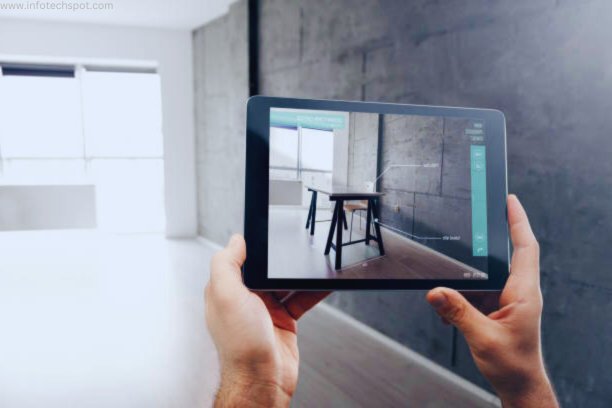Changing the Way We See the World
In this comprehensive article, we will delve into the intricacies of it, its applications, benefits, and the promising future it holds. So, let's embark on a journey to discover the boundless potential of AR.

Introduction:
Augmented Reality (AR) technology has become a transformative force in various industries, revolutionizing the way we perceive and interact with the world around us. From gaming and entertainment to education and healthcare, AR has opened up a realm of possibilities that were once unimaginable. In this comprehensive article, we will delve into the intricacies of it, its applications, benefits, and the promising future it holds. So, let's embark on a journey to discover the boundless potential of AR.
Understanding AR Technology:
It blends digital information seamlessly with the real world, enhancing our perception and interaction. It overlays virtual elements, like images, videos, or 3D models, onto the reality base environment, making an immersive and interactional experience. Unlike Virtual Reality (VR), which replaces the real world entirely, AR enhances it, providing users with a unique and enhanced perspective.
Applications of AR Technology:
Gaming and Entertainment: It has revolutionized the gaming and entertainment industry, offering gamers a new dimension of immersive experiences. Games like Pokémon GO introduced the world to the potential of AR, allowing players to capture virtual creatures in real-world locations. Additionally, AR is being employed in theme parks, museums, and live events to provide visitors with interactive and engaging experiences.
Education and Training: It has transformed education by making learning further interactional and engaging. Students can explore virtual 3D models of complex concepts, enabling a deeper understanding of subjects like anatomy, astronomy, and history. Furthermore, AR enhances training programs by simulating real-life scenarios, allowing professionals to practice in a risk-free environment.
Healthcare: It has immense potential in healthcare, assisting medical professionals in the diagnosis, surgery, and patient care. Surgeons can use AR overlays to visualize internal organs during complex procedures, improving precision and reducing risks. AR also aids in patient rehabilitation by providing interactive exercises and monitoring progress.
Retail and E-Commerce: AR has revolutionized the retail industry by enhancing the online shopping experience. Customers can virtually try on clothes, visualize furniture in their homes, or even test makeup products using AR applications. This immersive experience bridges the gap between physical and online shopping, increasing customer satisfaction and reducing returns.
Advantages of AR Technology:
Enhanced User Experience: It enriches user experiences by adding interactive and engaging elements to real-world environments. Whether it's gamification, educational simulations, or personalized shopping, AR captivates users and provides them with memorable encounters.
Increased Efficiency and Productivity: It streamlines processes and improves productivity in various sectors. In industries like manufacturing and logistics, AR-powered instructions and overlays assist workers in complex tasks, reducing errors and improving efficiency. AR-powered maintenance and repair guides also enable technicians to troubleshoot equipment more effectively.
Improved Decision-Making: It empowers decision-makers by providing real-time, data-driven insights in context. Architects and engineers can visualize designs in real-world environments, helping them make informed decisions. Similarly, AR analytics dashboards can provide managers with valuable information for optimizing processes and making strategic choices.
Future Trends and Potential:
The future of AR technology is brimming with exciting possibilities. As technology advances, we can expect even more sophisticated AR experiences. Here are some promising trends:
Wearable AR Devices: The advent of lightweight and stylish AR glasses will make AR more accessible and integrated into our daily lives. These devices will enhance our vision and provide contextual information, revolutionizing how we navigate the world.
AR in Smart Cities: AR technology can transform cities by overlaying information onto buildings, streets, and public spaces. This could enable tourists to have immersive guided tours or provide real-time updates on transportation and events.
AR in Remote Collaboration: AR-powered communication platforms will enable remote teams to collaborate seamlessly. From virtual whiteboards to 3D visualizations, AR will bridge the gap between physical and virtual workspaces.
Conclusion:
Augmented Reality (AR) technology has emerged as a game-changer, transcending industries and opening new frontiers. Its applications in gaming, education, healthcare, retail, and beyond have transformed the way we interact with the world. With enhanced user experiences, increased efficiency, and promising future trends, AR technology is set to shape our lives in remarkable ways. As we embark on this AR-driven era, let us embrace the endless possibilities it offers and unlock a future where the virtual and physical seamlessly coexist.











